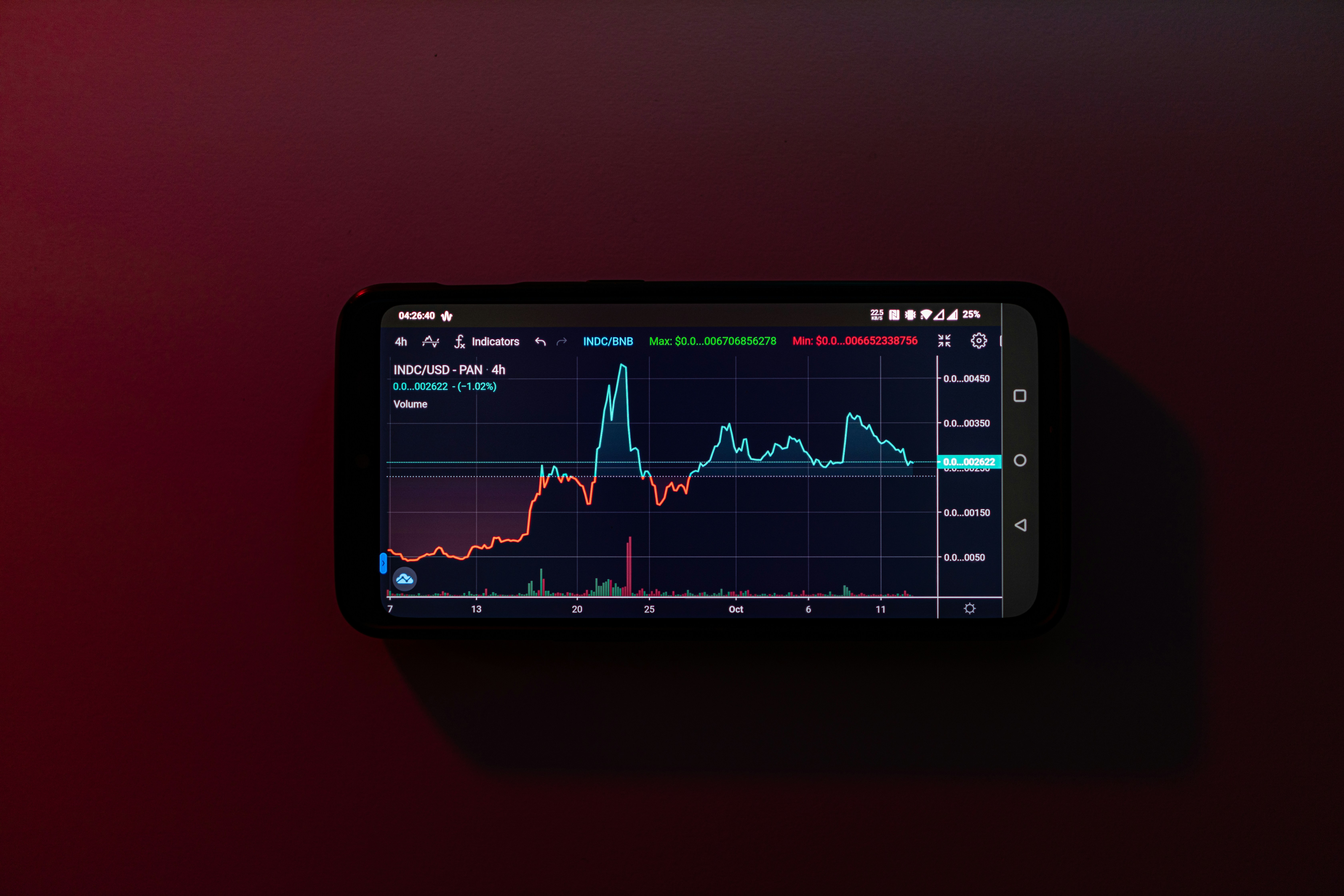Understanding Forex Trading Risks: Key Insights for Investors
Forex trading, or foreign exchange trading, has the potential for profitable returns, but it also carries significant forex trading risks. Understanding the forex risks and how to manage them is critical for anyone considering this investment option. This article will look at the various forex trading risks, offer insights into risk management in funded forex trading, and discuss the benefits and drawbacks of this investment.

What is Forex Trading?
Foreign exchange trading, or forex trading, is the practice of trading currencies on a worldwide market in an attempt to make a profit. With the use of leverage to increase their investments, traders make predictions about the changes in the value of currency pairings, such as EUR/USD. This market is very liquid and readily available because it is open twenty-four hours a day, five days a week. However, because of its volatility and the possibility of significant losses, particularly when leveraging money, it carries several hazards.
Forex Trading Risks

1. Market Risk
Market risk, also called price risk, is the most obvious among forex trading risks. When considering how risky forex trading is, it's clear that the danger comes from fluctuations in currency prices. These price changes can be influenced by various factors, including economic data, geopolitical events, and market sentiment. Understanding how risky forex trading is means recognizing that unexpected market changes can lead to significant losses. This highlights how risky forex trading can be for traders who are not prepared for sudden shifts.
2. Leverage Risk
Forex trading carries inherent risks, with one of the most significant being leverage. Leverage allows traders to manage larger positions using minimal capital, which can lead to substantial gains or losses. While leveraging positions can amplify profits, it also magnifies potential financial risks. Traders must exercise caution, as the use of leverage in forex trading increases exposure to significant financial losses. Understanding these forex risks is crucial for prudent trading decisions.
3. Interest Rate Risk
Forex trading presents various risks that traders must navigate to safeguard their investments. One critical risk is interest rate fluctuations, which can exert a profound influence on currency values. When a country's interest rates rise, its currency tends to strengthen due to increased investor interest. Conversely, lower interest rates can weaken a currency's value. Forex traders must vigilantly monitor these changes, as they can trigger significant market movements, impacting trading decisions and outcomes.
4. Liquidity Risk
Is forex trading safe? One of the primary forex trading risks is liquidity risk. Liquidity risk happens when a trader cannot buy or sell a currency quickly enough to avoid a loss. This risk is especially high for less commonly traded currency pairs. In the forex market, liquidity can change a lot, leading to difficulties in executing trades at the desired prices. During periods of low liquidity, forex risks increase as slippage becomes more likely.
Understanding forex trading risks, including liquidity risk, is crucial for any trader. When the market lacks liquidity, trades may not happen as expected, causing potential losses. This is why knowing the forex risks and planning for periods of low liquidity are essential to managing and mitigating potential financial losses effectively.
5. Political and Economic Risk
Forex trading risks are closely tied to political and economic events. Is forex trading safe when elections, policy changes, economic crises, and geopolitical tensions can cause significant volatility in the forex market? These forex risks require traders to stay updated on global news and developments to manage them effectively.
Political and economic events are key factors that influence currency values, adding to the forex trading risks. The question "Is forex trading safe?" arises when sudden changes in these areas lead to market fluctuations. To mitigate forex risks, traders must continuously monitor international news and be prepared for unexpected shifts.
6. Operational Risk
Forex trading involves several risks, including operational risks. Operational risks are losses that result from inadequate or failed internal processes, people, systems, or external events. In the context of forex trading, these risks can stem from system failures, fraud, or human errors. Is forex trading safe? These forex trading risks suggest that safety can be improved by addressing these vulnerabilities.
To minimize these forex risks, it's essential to use reliable trading platforms and establish strong operational procedures. Forex trading risks, such as system failures and human errors, can greatly affect trading outcomes. Is forex trading safe with these measures? While it can never be completely risk-free, taking these precautions can help reduce the operational risks of forex trading.
Is Forex Trading Safe?
Is forex trading safe? This question does not have an obvious answer. Forex trading has the potential to earn rewards, but it also includes significant risks. To safely navigate this market, it is necessary to recognize and manage risks. So, how risky is forex trading? Yes, forex trading is risky. However, with the correct information, risk management strategies, and determination, traders may reduce these risks.
Many people question, "How safe is forex trading?" It is important to understand that, while forex trading carries inherent risks, it may be done safely. Traders may better limit their risks if they have a thorough understanding of the market, use appropriate risk management techniques and exercise discipline. So, is forex safe? It is feasible with careful planning and preparation.
Forex Trading Benefits and Risks
Advantages:
- Liquidity: Traders can effortlessly join and exit positions due to the strong liquidity of the forex market.
- Leverage: With a little initial investment, traders may manage big holdings.
- Accessibility: There are many trading chances available in the forex market, which is open twenty-four hours a day, five days a week.
- Diverse methods: Technical analysis, fundamental analysis, and automated trading systems are just a few of the methods available to traders.
Dangers:
- High Volatility: The quick swings in currency values might result in losses.
- Risks Associated with Leverage: Although leverage can increase earnings, it can also result in significant losses.
- Complexity: There are a lot of factors influencing the forex market, which makes it difficult to precisely forecast fluctuations.
- Regulatory Risks: The degree of regulation varies from nation to nation, impacting trade security and safety.
Risk Management in Forex Trading
To succeed in the forex market over the long run, one must handle the risks associated with forex trading. Traders can use many tactics to efficiently control risks. Setting stop-loss orders is a crucial strategy that helps reduce possible losses. Diversifying trading portfolios is another essential strategy for distributing risk across different currency pairings.
Appropriate position sizing is another important aspect of good forex trading risk management that helps avoid overexposure to any one deal. Making well-informed selections requires being up to date on market circumstances and utilizing both technical and fundamental analysis. Through the implementation of these risk management strategies for forex trading, traders may protect their capital and increase their likelihood of success.
1. Set Stop-Loss Orders
Setting stop-loss orders is a key part of FX trading risk management. A stop-loss order is a command to close a trade when it reaches a certain price, preventing more significant losses. By using stop-loss orders, traders can limit their risk and protect their capital.
Effective FX trading risk management involves using stop-loss orders to minimize potential losses. These orders ensure that trades are closed at a predetermined price, helping traders safeguard their investments. Implementing stop-loss orders is essential for managing risk in FX trading.
2. Use Proper Position Sizing
Effective FX trading risk management relies on proper position sizing. This crucial aspect of trading involves allocating the right amount of capital to each trade, ensuring that you don't risk too much on a single transaction. By limiting your exposure to 1-2% of your trading capital per trade, you can minimize potential losses and maximize gains.
In Forex trading, risk management is critical, and proper position sizing is key. By managing your position size, you can control your risk and avoid over-allocating your capital. This approach enables you to withstand market fluctuations and maintain a stable trading strategy. Remember, proper position sizing is essential for successful FX trading risk management, helping you navigate the markets with confidence and poise.
3. Diversify Trades
To reduce Forex risks, diversification is a crucial tactic in risk management for foreign exchange traders. Trading professionals can lessen their exposure to market volatility and potential losses by distributing their bets over many currency pairings. This strategy is essential for managing trading risk in FX, enabling traders to move through the markets with grace and confidence.
Diversity is one of the approaches used in FX trading risk management to answer the question, "Is Forex risky?" Forex traders may efficiently control the inherent risks associated with the market by spreading their trades across a variety of currency pairings. By lessening the effect of unfavorable market fluctuations, this method makes FX trading a more viable and alluring investment choice.
4. Stay Informed
To handle the risks associated with FX trading, traders must stay knowledgeable. This will enable them to traverse the hazards and confidently respond to the question, "Is Forex risky?" By keeping abreast of economic data releases, market news, and geopolitical developments, traders may make well-informed judgments and forecast future movements in the market.
In the realm of foreign exchange trading, risk management is essential, and knowledge is power. Traders need to keep up with the latest changes in the market, economic data, and geopolitical happenings. By doing this, individuals may lower the confusion around the question "Is Forex risky?" and handle Forex risks and decisions more effectively. Trades may reduce Forex risks and thrive in the fast-paced world of FX trading risk management with the right information and awareness.
5. Develop a Trading Plan
A clear trading plan that specifies a trader's approach, risk tolerance, and objectives is essential for effective risk management in foreign exchange trading. This strategy acts as a road map, assisting traders in navigating the dangers associated with Forex trading and navigating the complexity of FX trading.
To control Forex trading risks and maintain focus on objectives, traders must have a trading strategy. Traders can recognize possible Forex risks and create ways to reduce them when they have a well-defined plan in place. Traders may succeed in the markets by adhering to their plan, avoiding snap judgments, and maintaining a commitment to their FX trading risk management technique.
6. Learn and Adapt
To succeed in forex trading, you must be dedicated to lifelong learning and development. By continually assessing your trading strategies and performance, you can pinpoint areas that need work and hone your approach to better manage Forex risks. This practice of constant learning keeps you adaptable and sensitive to evolving market situations. Embracing a culture of continual development is important to success in forex trading. You may more effectively manage Forex risk and achieve your trading objectives by learning from your failures and adapting your techniques.
What is Price Tolerance in Forex?
What does Forex price tolerance mean? Put simply, it's the degree of price change that a trader is willing to tolerate before ending a transaction. Since price tolerance is closely related to risk tolerance and aids in good position management, it is a crucial concept in forex trading. Traders may minimize possible losses and set realistic stop-loss and take-profit levels that line with their risk management tactics by having a clear awareness of their price tolerance.
Knowing what constitutes a reasonable price tolerance in forex trading is essential for establishing limits and controlling risk. Traders can decide how much price movement they're ready to take before closing a deal by knowing their price tolerance.
Disadvantages of Forex Trading
While forex trading offers potential rewards, it also has its drawbacks:
- High Risk: There's a significant possibility of losing a lot of money, especially for inexperienced traders.
- Complexity: The currency market's complexity and a vast range of contributing factors make it challenging to anticipate price swings with any degree of accuracy.
- Emotional tension: The fast-paced nature of forex trading can lead to impulsive decisions and emotional tension.
- Technology Dependency: Because forex trading relies heavily on technology, trading outcomes might be impacted by system errors or other technical issues.
What is a risk when investing in foreign exchange markets?
Significant market risk is associated with investing in foreign exchange (forex) markets, where changes in currency prices can result in substantial losses. Economic statistics, geopolitical developments, and market mood all affect these oscillations. Forex traders must efficiently manage risk since leverage, which allows them to hold huge positions with a small amount of cash, can magnify these losses.
Liquidity risk, which arises when it's challenging to swiftly acquire or sell a currency without affecting its price, is another major issue. Periods of low liquidity may lead to financial losses and slippage.
What is the largest risk when trading on foreign exchanges?
The most serious risk connected with trading foreign exchanges is market risk, which involves the possibility of severe losses owing to abrupt variations in currency values. These price swings might be triggered by various events, including changes in interest rates, geopolitical developments, and the revelation of economic information. Leverage is another factor that contributes to the currency market's volatility. Traders must be able to detect and manage this risk, as it can potentially increase earnings and losses.
Conclusion
In conclusion, forex trading offers significant opportunities but comes with substantial risks such as market, leverage, and liquidity risks. Effective risk management strategies, including setting stop-loss orders and proper position sizing, are crucial for success. While the potential for high rewards makes forex trading attractive, it requires caution and continuous learning. Understanding the complexities and drawbacks is essential for making informed decisions.




